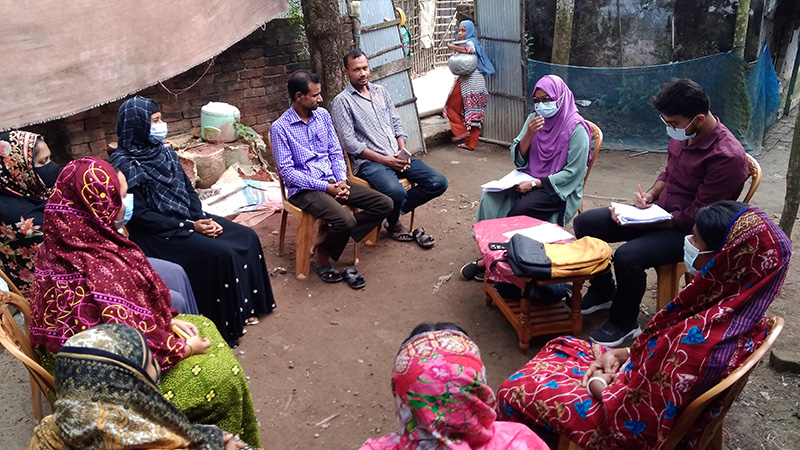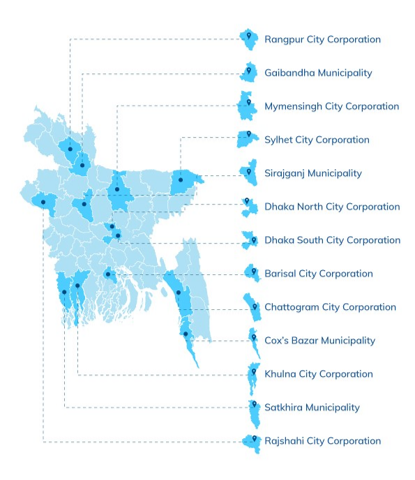GET IN TOUCH
- Please wait...

Bangladesh has made remarkable progress in extreme poverty alleviation through pragmatic and scalable development projects. However, development projects have mostly been highly focused on the rural Low-Income Communities (LICs) leaving behind the underprivileged in the urban areas. Many of these urban LICs residents, supporting Bangladesh’s rapid economic and infrastructural development through employment, have migrated from rural areas in search of better opportunities. However, they are often residing in crowded slums and unsanitary facilities and become victims of gender and minority-based violence, theft, mistreatment, illegal eviction by landlords, etc. The COVID-19 pandemic has exacerbated the woes of urban LICs even further.
To tackle these woes of the urban poor, BRAC Urban Development Programme (UDP), has taken a multi-dimensional approach to mitigate poverty and deprivation in the LICs. UDP is currently operating 12 projects under its umbrella, one of which includes Engaging Multi-sectoral Partners for Creating Opportunities, Improving Well-being, and Realizing the Rights of the Urban Poor (EMPOWER). Phase 1 of EMPOWER was implemented from 2016 to 2021, and the project had several achievements including, the provision of livelihood grants, educational grants, and agricultural support.

Before implementation of Phase 2, the UDP team engaged LightCastle Partners to conduct a suitability study of 13 selected city corporations and municipalities. The objectives of the suitability study were as follows: to do a systematic review of policies and strategies for drawing the horizon of urban programming in Bangladesh, to evaluate shortlisted geographical locations and their context-specific needs, to draw narratives from the voices of community people, and to produce a GAP analysis and stakeholder mapping of shortlisted cities and municipalities.
The approach of the study was purely qualitative, consisted of 6 steps, and was initiated with robust secondary research of available reports and studies of the socioeconomic status of participants in the 13 municipalities and city corporations. Additionally, primary research consisted of 44 KIIs and 39 FGDs (2 in each working area). Data was collected from the following stakeholders: Participants and Non-Participants in 13 shortlisted urban areas, including participants of all age groups, genders, and ethnic backgrounds, Local Government Institutions (LGIs), Public Agencies providing services to urban LIC communities, Non-Government Organisations (NGOs), and BRAC Field Staff working for the benefit of LICs in shortlisted areas, EMPOWER Project Staff and UDP Project Staff.
The study used a Suitability Assessment Framework to generate a GAP analysis of selected areas. The framework is designed to evaluate the situation in each area using a combination of the following factors: Physical, Social, Economic, Institutional, Natural, and Environmental.
Based on the findings from primary research, the suitability assessment framework was used to design both area-specific and general recommendations in consideration of the current GAPs. LightCastle Partners has also recommended available support systems and collaboration opportunities with other departments of BRAC, other NGOs, public and private sector stakeholders, and identified future macroeconomic opportunities. In addition, demand-supply dynamics for the labor market in these target areas were assessed and mapped to improve employment opportunities for the residents.
Our experts can help you solve your unique challenges